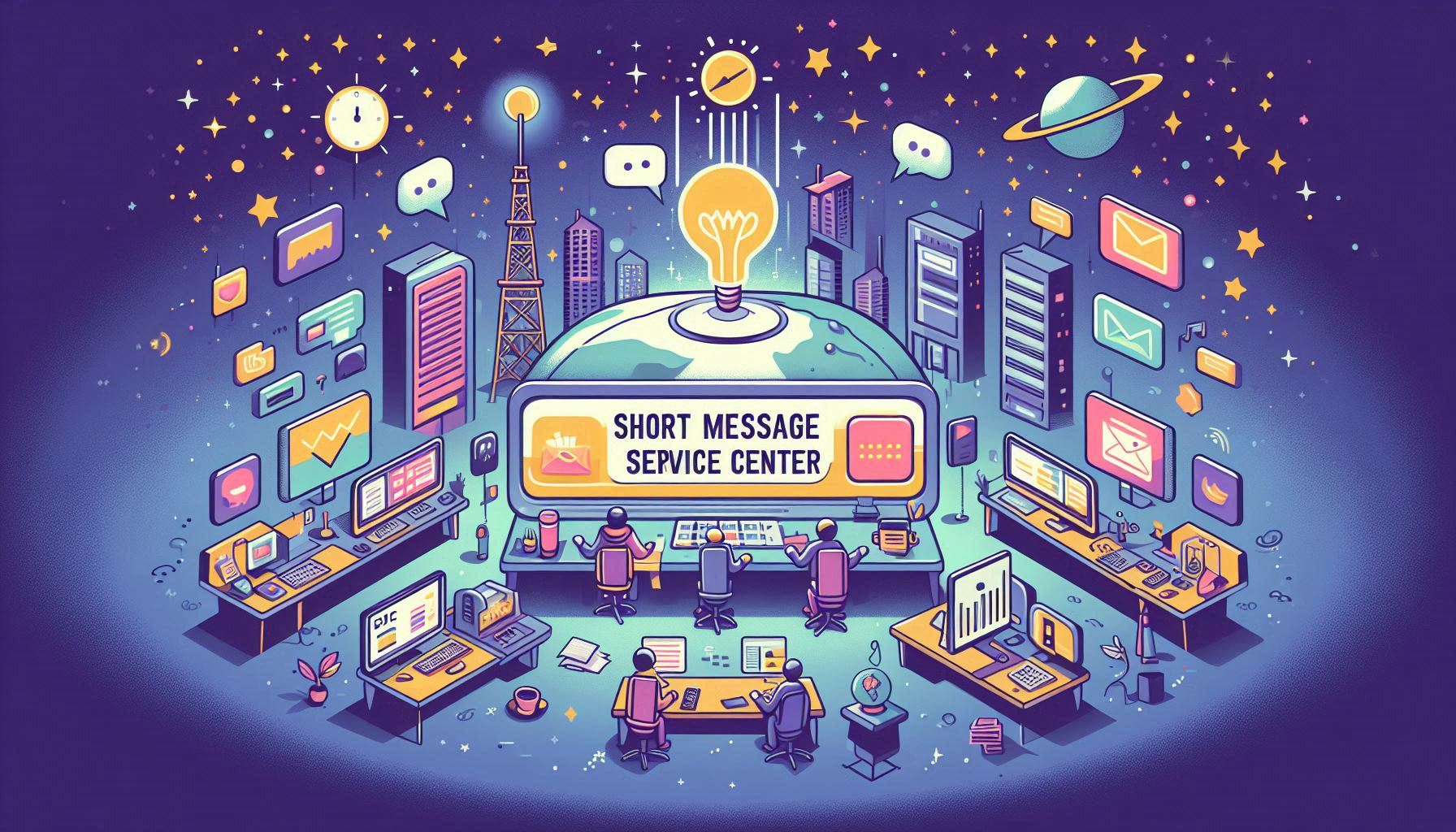In today’s digital world, messaging plays a crucial role in our communication, whether it’s for personal use or business purposes. One of the key components in the messaging ecosystem is the Short Message Service Center (SMSC). But what exactly is SMSC, and how does it work to ensure that your SMS (Short Message Service) reaches its destination? In this article, we will explore the SMSC’s role in the SMS delivery process and its importance in modern telecommunications.
1. Understanding SMSC: The Backbone of SMS Communication
The Short Message Service Center (SMSC) is a crucial system that manages and routes text messages (SMS) between senders and recipients across mobile networks. It acts as a gateway for SMS messages, ensuring their proper delivery.
- Basic Role: When you send a text message, it first travels to the SMSC, which stores and forwards the message to the intended recipient.
- Storage and Forwarding: SMSCs temporarily store messages when the recipient is unavailable (for example, when their phone is turned off) and forward them when the recipient is reachable.
2. How SMSC Works
The process of sending a text message may seem simple, but behind the scenes, the SMSC is doing all the heavy lifting. Here’s a breakdown of how it works:
- Sender Initiates SMS: When a user sends a message, it first reaches the SMSC of the sender’s mobile network provider.
- SMSC Stores the Message: If the recipient’s phone is off or unavailable, the SMSC stores the message temporarily in its database.
- Message Forwarding: When the recipient is available (their phone is on), the SMSC forwards the message to their phone.
- Acknowledgment: Once the message is successfully delivered, an acknowledgment is sent back to the sender’s phone, indicating successful transmission.
3. Types of SMSCs
SMSC systems can vary based on their deployment and features. There are generally two types of SMSCs:
- Carrier SMSCs: These are owned and operated by mobile network providers (e.g., AT&T, Verizon, Vodafone). They handle messages for users on their network.
- Third-Party SMSCs: Some businesses or application developers use third-party SMSCs to send bulk SMS messages for marketing, notifications, or verification purposes. These SMSCs can integrate with various platforms and are not limited to any single carrier network.
4. SMSC and SMS Routing
The SMSC plays an essential role in routing messages between different networks. This is especially important in the case of cross-network or international SMS messages. Here’s how SMS routing works:
- Local Routing: When sending a message to someone on the same mobile network, the SMSC routes the message directly without involving any external networks.
- Cross-Network Routing: If the message is intended for a recipient on a different network, the SMSC routes it to the correct network’s SMSC for delivery.
- International Routing: For international messages, the message might travel through multiple SMSCs in different countries before reaching the recipient.
5. SMSC and Message Queuing
One of the key features of the SMSC is its ability to queue messages. This comes in handy when the recipient is not immediately available, or when there is network congestion.
- Queue Management: The SMSC holds onto undelivered messages and retries sending them at specified intervals. This ensures that the message doesn’t get lost if it cannot be delivered immediately.
- Time-to-Live (TTL): SMSCs also use a TTL setting, meaning they will attempt to resend the message for a predefined amount of time (usually a few hours or a day) before discarding it.
6. SMSC and Security
SMSC systems also play a role in ensuring the security and integrity of the messages they handle. Here’s how SMSCs contribute to security:
- Encryption: SMS messages can be encrypted at various points between the sender and recipient, including while stored in the SMSC.
- Authentication: SMSCs authenticate the identity of the sender to prevent fraudulent or spam messages.
- Spam Control: The SMSC can filter and block spam messages based on certain criteria, such as suspicious keywords or senders.
7. Role of SMSC in SMS Marketing
SMSC systems are widely used in SMS marketing, which allows businesses to send bulk text messages to their customers. Here’s how SMSCs help in this industry:
- Bulk SMS: Companies can use SMSCs to send promotional offers, event reminders, and service alerts to a large number of recipients at once.
- Two-Way SMS: SMSCs also support two-way communication, enabling businesses to engage with customers by allowing them to reply to messages or send queries.
- Campaign Management: SMSCs offer features to track message delivery rates, read receipts, and customer interactions to optimize campaigns.
8. SMSC in Emergency and Critical Notifications
In emergency situations, SMSCs play a critical role in delivering time-sensitive messages. For instance, governments and organizations use SMSCs to send alerts about natural disasters, security threats, or health emergencies.
- Instant Delivery: SMSCs enable fast delivery of emergency alerts to large numbers of people, ensuring they receive the information in a timely manner.
- Reliability: Since SMS messages don’t require internet access and are reliable even in low network conditions, SMSCs are an ideal medium for critical communications.
9. Troubleshooting SMSC Issues
While SMSCs are generally reliable, there may be instances when issues arise with message delivery. Here are some common problems and solutions:
- Message Not Delivered: If your SMS isn’t delivered, it could be due to network congestion, a technical issue with the SMSC, or the recipient’s phone being off.
- Message Delays: Delays can occur if the SMSC is overloaded or if there are issues with message routing. Try resending the message after some time.
- Blocked Numbers: If your messages aren’t being sent, it might be because your number is blacklisted by the recipient or by the SMSC due to spam-like behavior.
10. Conclusion
The Short Message Service Center (SMSC) is an essential part of the SMS communication infrastructure, ensuring that your messages are stored, routed, and delivered properly. It acts as a bridge between senders and recipients, offering features like message queuing, security, and bulk messaging. Whether for personal use or business, the SMSC helps facilitate reliable and efficient communication in the world of text messaging.
By understanding how SMSCs function, you can better appreciate the technology behind the simple act of sending a text and how it plays a vital role in making mobile communications possible across different networks and regions.



